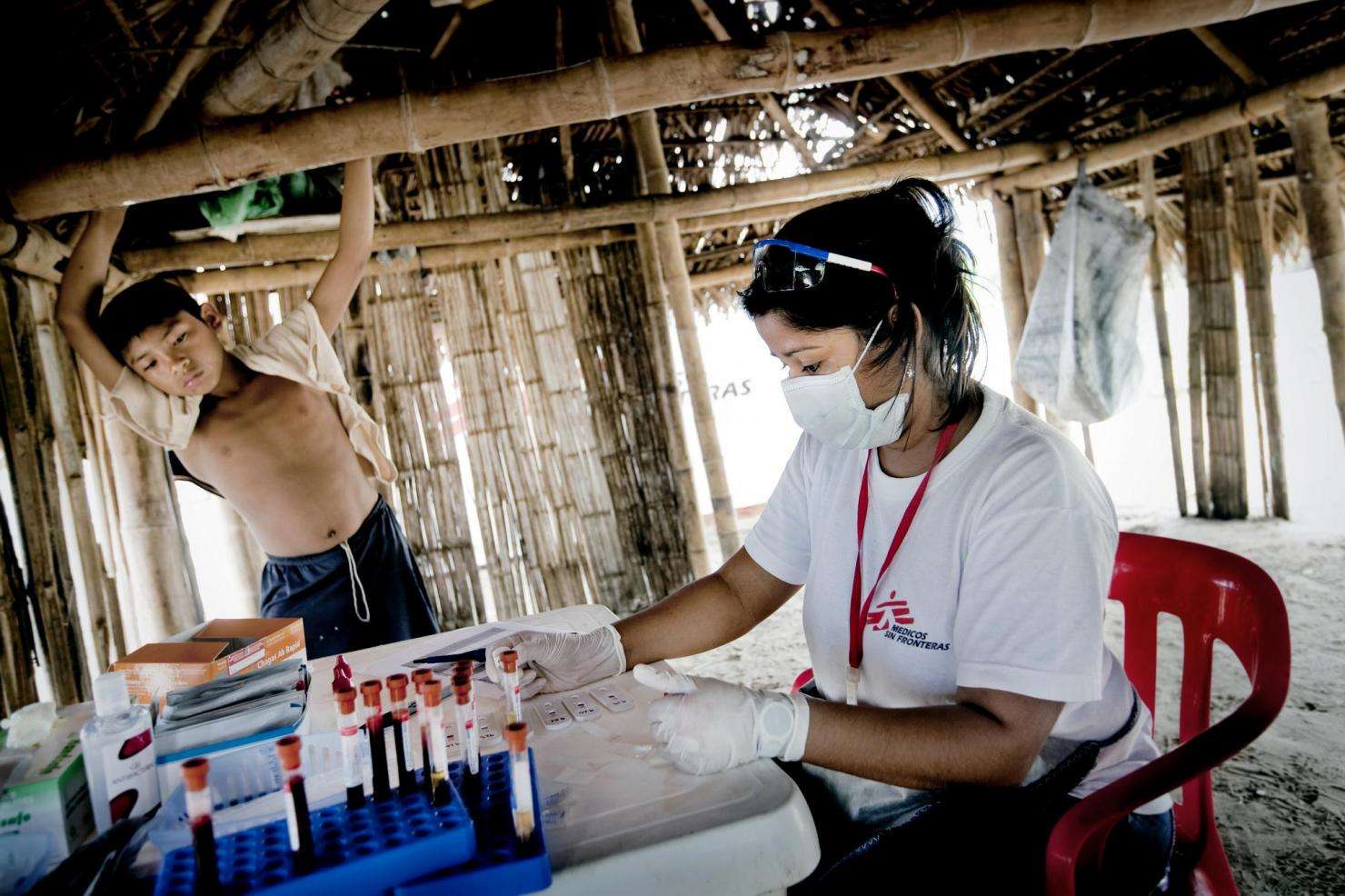
Colombia 2010 © Mads Nissen/MSF
Chagas screening at indigenous community "La Esperanza"(Hope), Arauca region. Chagas disease is diagnosed through a blood serum test. A centrifuge is used to separate the blood soon after the sample is taken and obtain the serum, which is then taken to a laboratory for analysis.<br /><br />At the end 2009, MSF integrated Chagas screening and treatment into its primary healthcare services already carried out in Arauca, a conflict-affected region in Colombia bordering Venezuela. After patients are confirmed to have Chagas disease, they are given a medical check up and started on a two-month long treatment. The MSF team carries out weekly medical follow up to check for side effects and any difficulties with complying with the treatment. This is the first time MSF treats Chagas diseas in a conflict context. "It is a real challenge, because the treatment requires constant follow up during two months, and there is always the concern that we will be unable to reach a community for security constraint or because an armed group declared a general stopping of the road movements in the region", said Patrick Swartenbroekx, MSF field coordinator in Tame.
Chagas disease is endemic in most Latin American countries. It is caused by the trypanosoma cruzi parasite and transmitted mainly by the 'kissing bug', a blood-sucking insect common in rural areas and city outskirts where people live in adobe houses made of clay and straw. Transmission is also possible from mother to child, through blood transfusions, organ transplants and contaminated food. Patients with Chagas disease may live for years without presenting any symptoms. If untreated, however, the disease can lead to serious health problems, mainly heart and intestinal complications, and even death.
Chagas disease is endemic in most Latin American countries. It is caused by the trypanosoma cruzi parasite and transmitted mainly by the 'kissing bug', a blood-sucking insect common in rural areas and city outskirts where people live in adobe houses made of clay and straw. Transmission is also possible from mother to child, through blood transfusions, organ transplants and contaminated food. Patients with Chagas disease may live for years without presenting any symptoms. If untreated, however, the disease can lead to serious health problems, mainly heart and intestinal complications, and even death.
